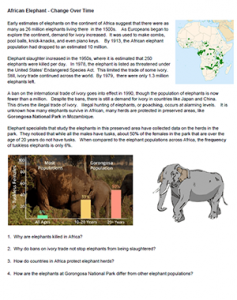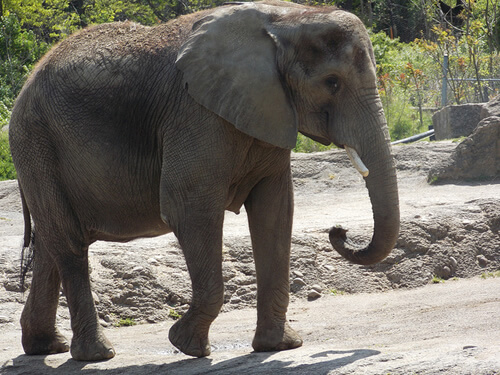
This activity was created for an evolution unit in an intro biology class (1 semester class) where I wanted to include a little bit of ecology and conservation science. Students had been studying evolution, looking at many HHMI resources like the “Rock Pocket Mouse” and Finches on the Galapagos.
Researchers studied elephants at Gorongosa National Park. They observed that females in a certain age group have a high frequency of tusklessness. Meaning, many of the females did not have tusks. Tusks are a genetic trait, though the activity does not explore the genetic component.
The activity starts with a history lesson on the ivory trade and poaching. Information on this section of reading was summarized from The Great Elephant Census site. The first page of the lesson is a good time to have a discussion about what efforts humans should make to protect animals.
I also put up a map of the world because many of my students need a geography reminder about where Africa is and how large it is. The map shows the location of the Gorongosa National Park.
After the discussion, students watch the HHMI film “Selection for Tuskless Elephants” which is about 7 minutes long. Students answer questions as they watch the film to keep them on task.

Finally, students complete a VIDA chart (variation, inheritance, differential survival, adaptation) to EXPLAIN why elephants in Mozambique lost their tusks.
Grade Level: 8-12
Time Required: 35-45 minutes (with class discussion)

